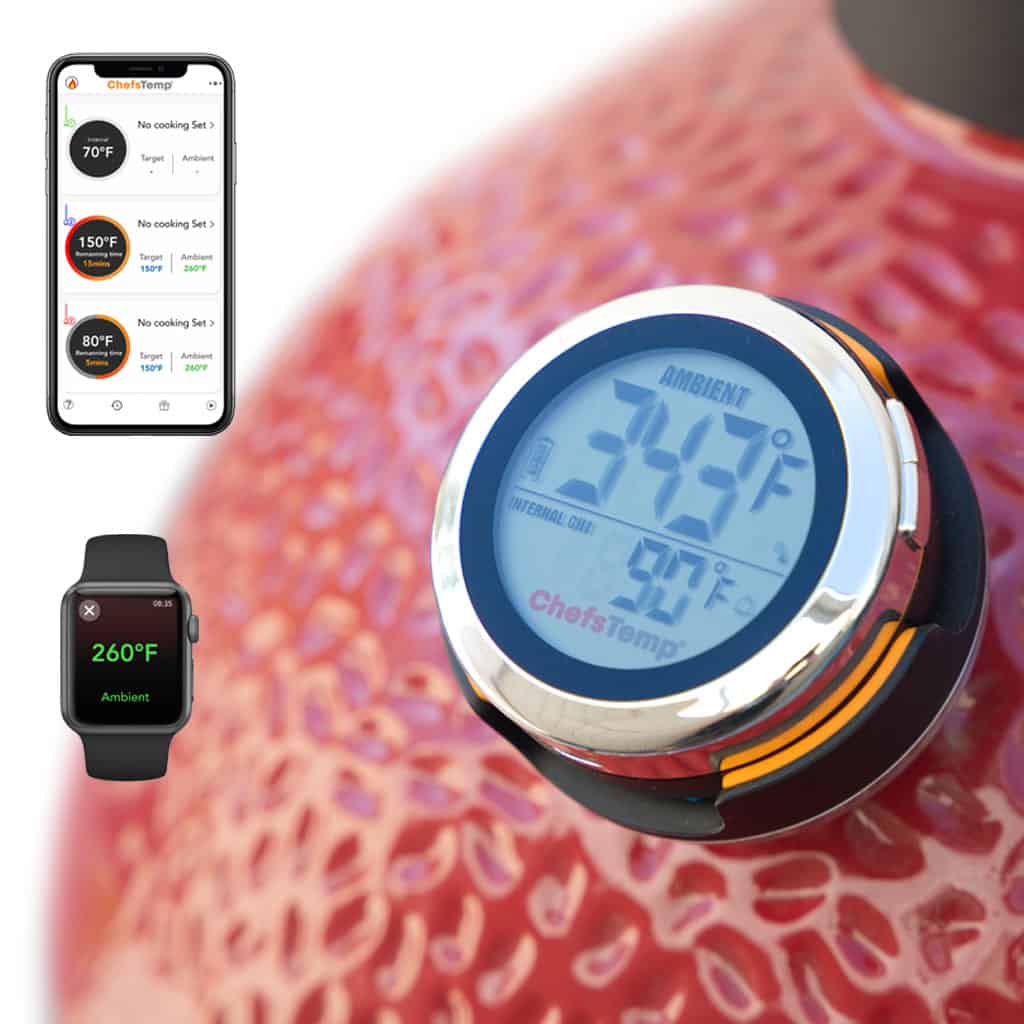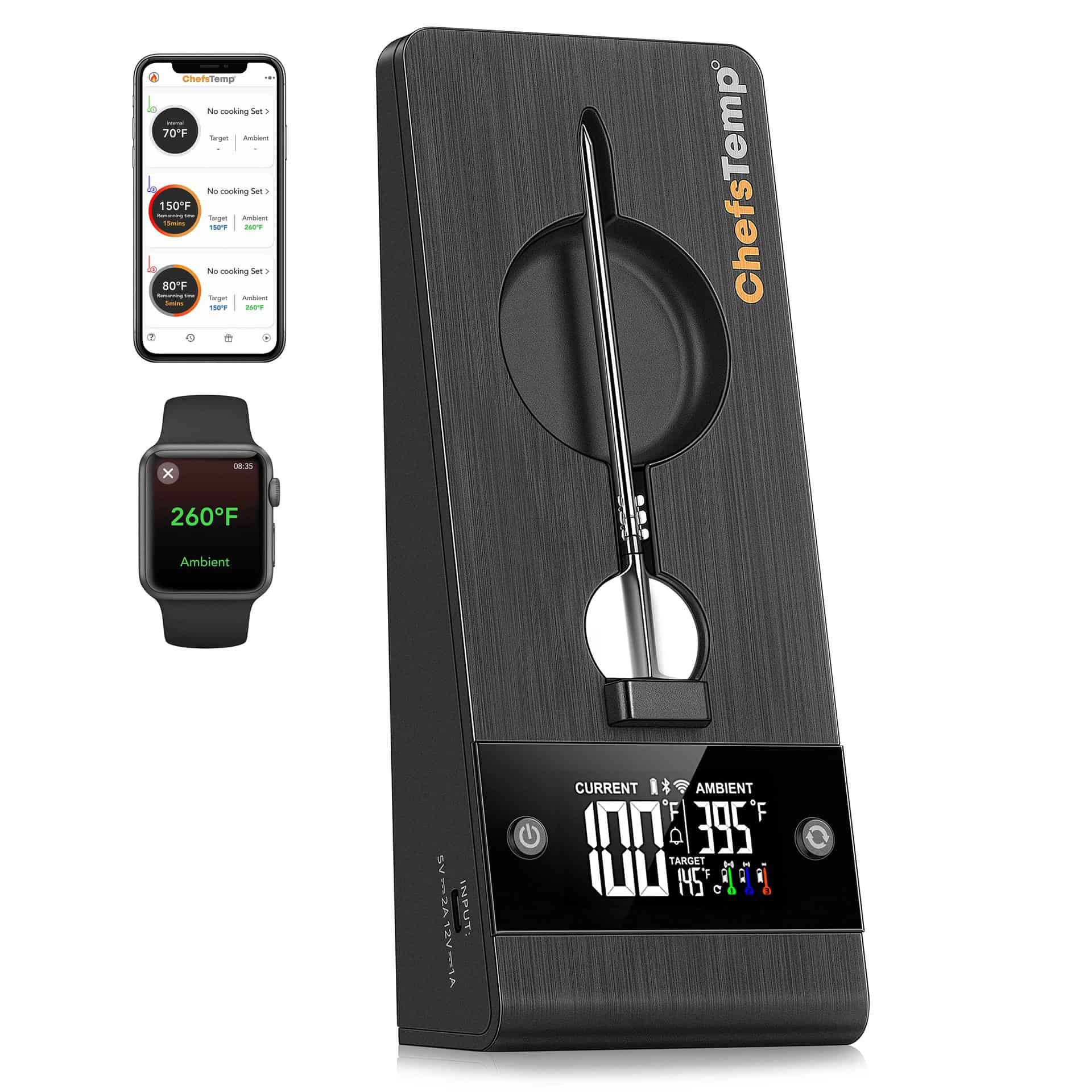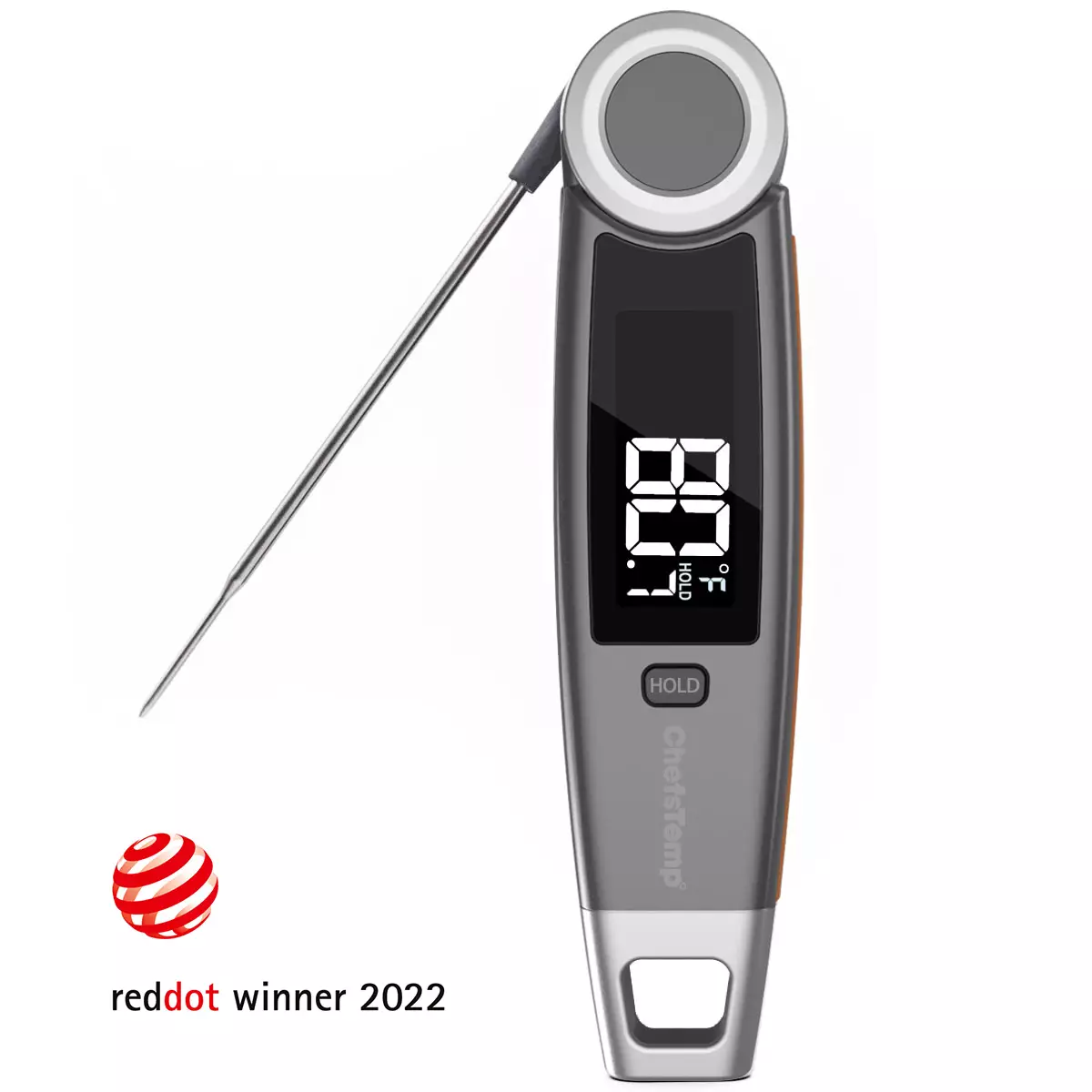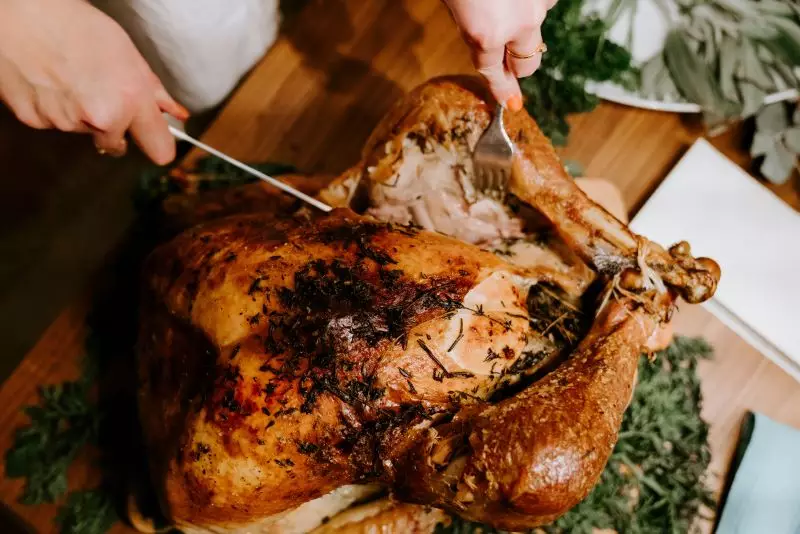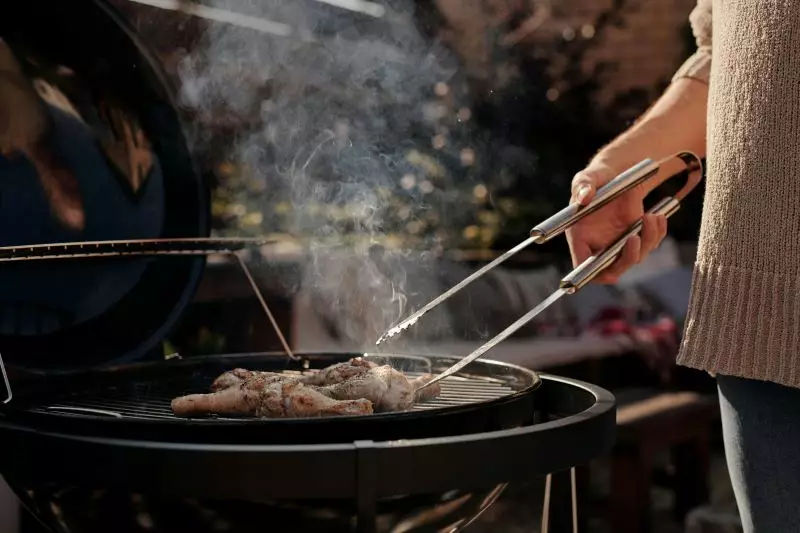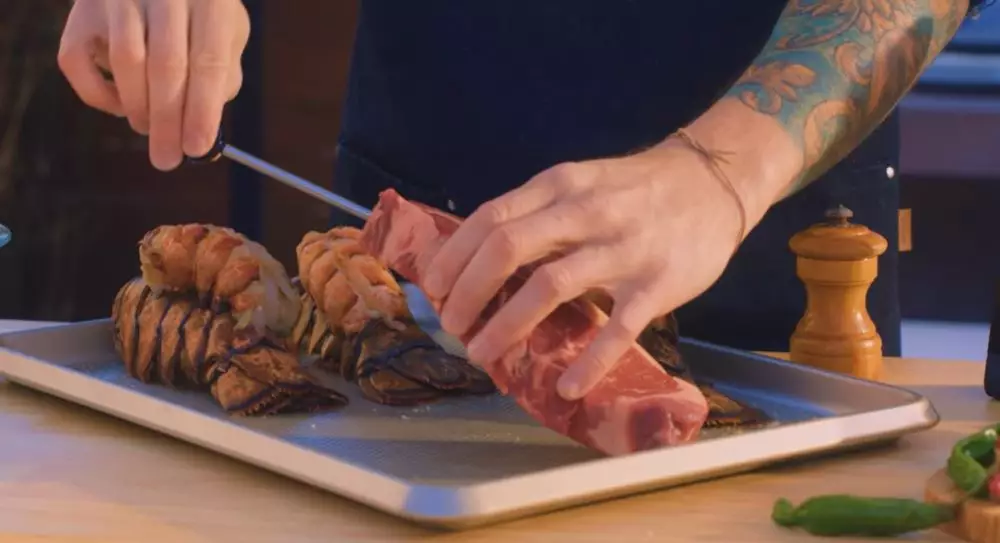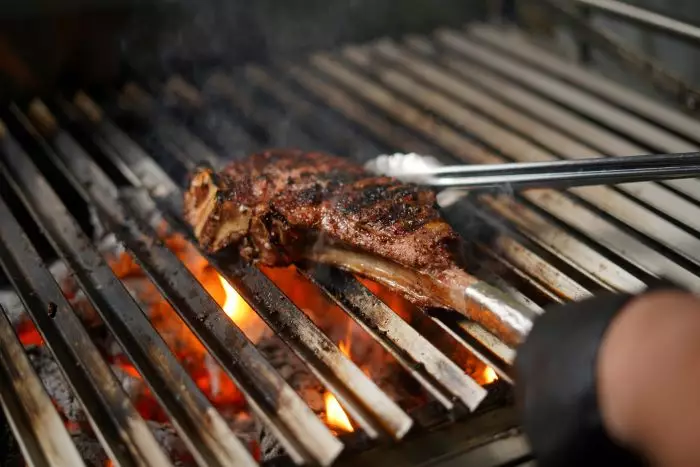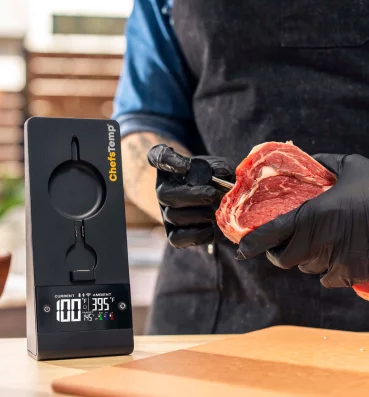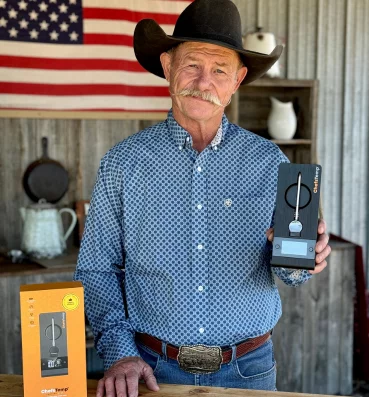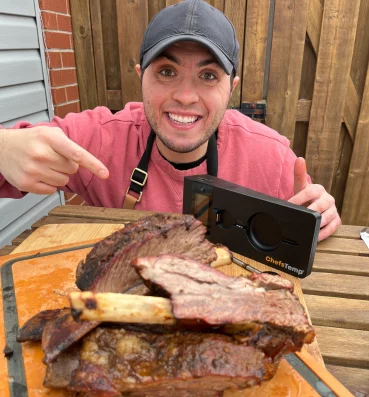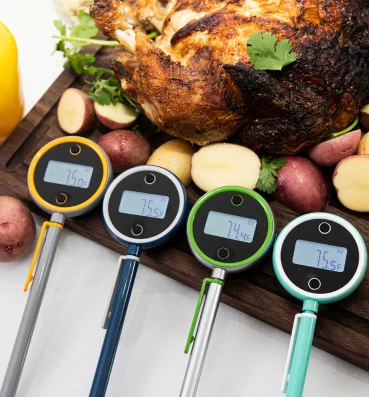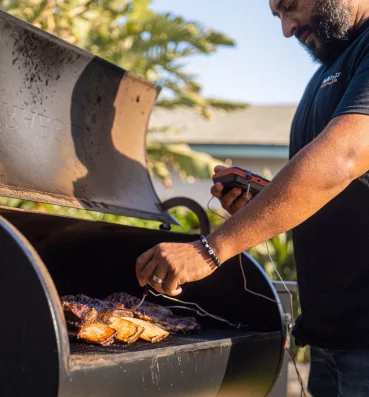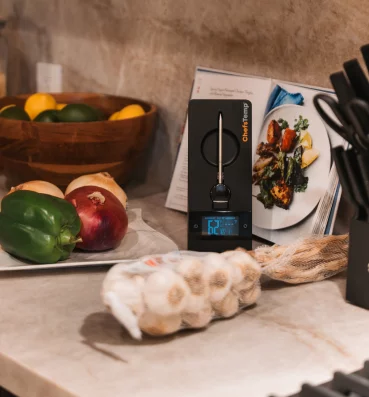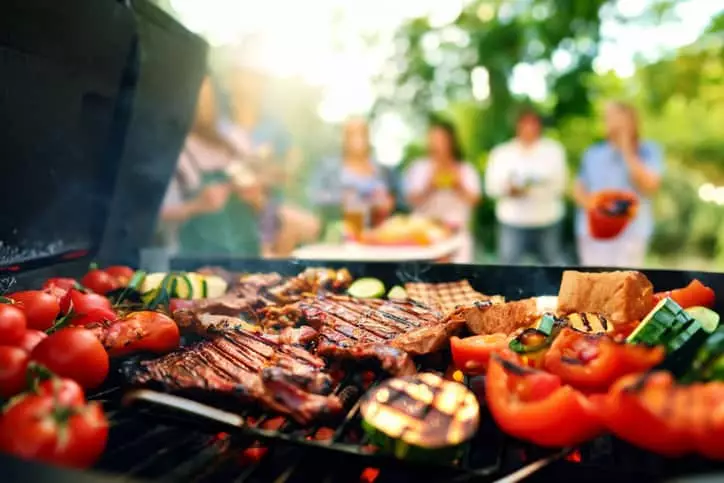
What is the best kind of meat thermometer to buy and why?
A meat thermometer serves as an indispensable tool in the culinary world, providing essential precision in determining the doneness of various meats. Achieving the perfect doneness—whether it’s a succulent steak, a tender roast, or juicy poultry—requires accurate temperature monitoring. Two primary contenders for this task are the instant read meat thermometer and the smart meat thermometer.
Let’s delve into the features, benefits, and reasons why both are exceptional choices for culinary enthusiasts.
Table of Contents
Instant-Read Meat Thermometer:
A kitchen must have an instant-read thermometer because of its accuracy and ease of use. This is why it’s a great option for novices and experienced cooks alike:
- Speed and Accuracy: An instant-read thermometer delivers accurate temperature readings in a matter of seconds, true to its name. This speed guarantees that the cooking process loses as little heat as possible, enabling you to quickly inspect different portions of the meat.
- Versatility: It can be grilled, roasted, pan-seared, or smoked, among other culinary techniques. Its probing shape makes it simple to put into a variety of meat cuts and thicknesses.
- User-Friendly: Because instant-read thermometers are easy to use and usually include a clear digital display and simple buttons, cooks of all skill levels may utilize them.
- Affordability: Compared to smart meat thermometers, they are frequently more affordable, which makes them a viable choice for individuals just beginning their culinary adventure.
Smart Meat Thermometer:
Meat thermometers are only one example of how kitchen utensils have been transformed by the rise of smart technology. Here are some reasons why purchasing a smart meat thermometer is worthwhile:
- Wireless Connectivity: Many smart thermometers have wireless connectivity built in, which enables you to check the temperature from a distance using smartphone apps. Multitaskers or those who prefer the ease of checking temperatures without being confined to the stovetop or grill will find this feature especially helpful.
- Precision and Alerts: Smart thermometers often come equipped with multiple probes for simultaneous temperature monitoring of different cuts or types of meat. They guarantee consistently cooked meat by taking exact temperature readings and notifying you via phone when the target temperature is attained.
- Data Tracking and Recipes: Some smart thermometers offer features such as data tracking and integration with recipes, providing cooking recommendations based on temperatures and suggesting ideal cooking times for different meats.
- Ease of Use: Smart thermometers are made with simple setup procedures and user-friendly apps, even with their sophisticated technology.
How to calibrate a meat thermometer?
For accurate temperature readings, a meat thermometer’s accuracy must be guaranteed because even little errors can have an impact on the way the meat cooks. Meat thermometer calibration is a straightforward yet crucial procedure that confirms the device’s accuracy. This is a detailed tutorial on calibrating various kinds of meat thermometers:
- Ice Water Method:
Get a glass of crushed ice and ice water ready.
After adding the crushed ice to the glass, thoroughly stir in the cold water.
Make sure the thermometer probe doesn’t come into contact with the glass or the bottom as you insert it into the middle of the ice water.
Hold off until the reading stabilizes. It should measure 0°C, or 32°F. Note the difference if it doesn’t.
- Boiling Water Method:
Bring a pot of water to a boil, then let it cool for one minute.
Make sure the thermometer probe doesn’t come into contact with the pot’s edges or bottom as you submerge it in the boiling water.
At sea level, the thermometer should register 212°F, or 100°C. Take note of any variations in the temperature that is shown.
- Adjustment:
On the rear or face of many thermometers, there is a calibration nut or screw. Regarding calibration corrections, consult the manufacturer’s instructions.
When using a digital thermometer for cooking, take into account any deviation and modify your goal temperatures if the thermometer lacks manual calibration options.
- Repeat if Necessary:
If the thermometer has an adjustment feature, use the manufacturer’s instructions to make the required changes in light of the deviation found during calibration.
If the temperature is not changeable, record the variation for future use and modify your cooking temps appropriately.
- Regular Verification:
Your meat thermometer should be calibrated on a regular basis, particularly if it has been dropped, exposed to sudden temperature changes, or you think that the readings are off.
To guarantee that the thermometer stays accurate for precise cooking, follow the calibration instructions.
Do you need a meat thermometer to cook steak?
Without a doubt, a meat thermometer is an essential tool for preparing the ideal steak. This is the reason it’s crucial:
- Precision in Doneness: Steak preferences vary widely, from rare to well-done. It can be challenging to cook meat to the exact doneness that you or your guests require without a meat thermometer. Depending just on timing or visual cues may not provide consistent outcomes because to variations in cuts and thicknesses. Accuracy in achieving the desired level of doneness at an internal temperature is ensured by using a thermometer.
- Consistency in Cooking: Preparing your steaks consistently is ensured by using a meat thermometer. It’s easier to consistently cook to the right doneness each and every time if you know the precise temperature, regardless of whether you’re cooking a thick ribeye or a thinner sirloin.
- Food Safety: Using a meat thermometer guarantees food safety in addition to producing the ideal flavor and texture. By guaranteeing that your steak reaches the appropriate safe temperature, it helps to thoroughly eradicate dangerous bacteria such as salmonella or E. Coli.
- Avoiding Overcooking: Overcooked steak can result in toughness and a loss of flavor and juiciness. By enabling you to take the steak off the heat just when it reaches the proper temperature and avoiding it from getting dry or rough, a thermometer helps you avoid overcooking.
- Different Cuts, Different Temperatures: For best results, different internal temperatures are needed for different cuts of steak. A medium-rare filet mignon may need to be served at a different temperature than a medium-rare ribeye. A meat thermometer guarantees that every cut is cooked to perfection based on its unique needs.
Get the Best Meat Thermometer in the Business with ChefsTemp Instant Read Thermometer!
Experience culinary excellence with the ChefsTemp Instant Read Thermometer, acclaimed as the best in the business!
Order Yours Today and Cook with Confidence! Unlock the secret to perfectly cooked meals every time. Don’t miss out on precision and flavor—get your ChefsTemp Instant Read Thermometer today!
Discover Other ChefsTemp Products
Discover more recipes and learn kitchen tricks by joining our cooking family on Facebook.
You may also like:
